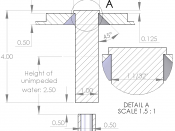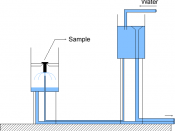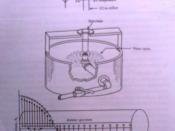Objective
The purpose of the Jominy test in this experiment is to determine the hardenability of three types of steels, namely EN 8, EN 16 and EN 24.
Introduction
This report will try to illustrate how the hardenability of these types of steels vary and why. This will be done by using the Jominy end quench test on each of the test pieces and then testing the hardness of the particular steel from the quenched end, to the end of the test piece. Taking these different points will enable me to find out how the hardness varies throughout the test piece considering the cooling rate of the metal and thus illustrate the hardenability of the steel. I will also analyse how adding different alloying elements to the steel can improve its hardenability.
Theoretically what should happen is that as the distance increases from the quenched end of the test piece the hardness should decrease.
This is because when the metal is heated red hot (above its A3 temperature) and then rapidly cooled at one end, in this case by means of water at a temperature of 250C, the carbon doesn't get enough time to precipitate out and is trapped which makes the metal harder. But the test piece will only be quenched at one end and so the steel will have different hardness relative to the distance from the quenched end.
Procedure
Three test pieces EN 8, EN 16 and EN 24 were heated above their A3 temperature to create a homogeneous austenitic structure and then end quenched by means of water at 250C. Taking safety in to consideration it should be noted that the test piece should not be handled until the whole test piece has cooled down. After this the test piece was mounted in the Vickers hardness...


